Archive of Gerontology and Geriatrics Research
Krüppel-like factor 4 promotes autophagy in macrophages under high glucose concentration by inhibiting the AKT/mTOR signaling pathway
Rui Zhang1,2, Sisi Chen1,2, Tongdan Wang1,2 and Pei Yu1,2*
2Tianjin Key Laboratory of Metabolic Diseases, Tianjin Medical University, Tianjin 300134, China
2. Tianjin Key Laboratory of Metabolic Diseases, Tianjin Medical University, Tianjin 300134, P.R China, Tel: +8602259560687; E-mail: [email protected]
Cite this as
Zhang R, Chen S, Wang T, Yu P (2023) Krüppel-like factor 4 promotes autophagy in macrophages under high glucose concentration by inhibiting the AKT/mTOR signaling pathway. Arch Gerontol Geriatr Res 8(1): 022-031. DOI: 10.17352/aggr.000035Copyright License
© 2023 Zhang R, et al. This is an open-access article distributed under the terms of the Creative Commons Attribution License, which permits unrestricted use, distribution, and reproduction in any medium, provided the original author and source are credited.Background: Diabetic atherosclerosis (AS) is the main cause of disability and death in diabetes. In the progression of AS, autophagic activity plays an important role. Krüppel-like factor 4 (KLF4) is a member of the zinc finger protein transcription factor family and is believed to play a protective role in the pathogenesis of atherosclerosis. This study aimed to explore the role of KLF4 in diabetic atherosclerosis and the autophagic mechanism.
Methods: A diabetic mouse model was established and the expression level of KLF4 protein in the aorta of the mice was detected after a high-fat diet. The effects of KLF4 on cholesterol content, apoptosis, autophagy-related proteins, and the AKT/mTOR signaling pathway of THP-1 macrophages were also evaluated.
Results: The expression level of KLF4 protein in the aorta of diabetic mice was decreased. Meanwhile, overexpression of KLF4 in THP-1 macrophages significantly decreased cholesterol accumulation, increased beclin-1 expression, decreased P62 expression, enhanced LC3 fluorescence intensity decreased cell apoptosis and p-mTOR and p-AKT expression were decreased under the condition of high glucose. After the reduction of KLF4 expression, the result is reversed.
Conclusion: KLF4 induces autophagy by inhibiting the AKT/mTOR pathway and alleviates cholesterol deposition in THP-1 macrophages under high glucose concentration.
Abbreviations
DM: Diabetic Mellitus; AS: Atherosclerosis; ox-LDL: oxidized Low-Density Lipoprotein; KLF4: Krüppel-Like Factor 4; siRNA: small Interfering RNA; THP-1: Human Monocytes Leukemia Cells; mTOR: mammalian Target of Rapamycin; PMA: Phorbol-12-Myristate-13-Acetate; LV: Lentiviral; NC: Negative Control.
Background
Macrovascular complications of Diabetic Mellitus (DM), characterized by Atherosclerosis (AS), such as coronary atherosclerotic heart disease, stroke, and peripheral artery disease, are the main causes of disability and death in diabetes [1]. In the early stage of AS, an inflammatory response is triggered by endothelial injury, and monocytes are recruited to sub-endothelium [2] and differentiate into macrophages under the action of various cytokines. Macrophages engulf lipids (especially oxidized low-density lipoprotein, ox-LDL) to form foam cells [3], which is an important step in the formation and development of AS plaques. Along with plaque progresses, macrophage aggregation increases, leading to macrophage apoptosis, inflammation, and plaque necrosis, eventually leading to cardiovascular and cerebrovascular events [4,5]. So, early intervention in AS formation targeting macrophage-derived foam cells has become the main direction for the prevention of AS.
The zinc finger protein transcription factor (Krüppel-like factors, KLFs) family is a class of binding proteins that regulate gene transcription [6]. Many studies have shown that family member KLF4 is closely related to endothelial cells, macrophages, other inflammatory cells, and pro-inflammatory factors [3], which may be particularly relevant to AS. Therefore, it is believed that KLF4 plays an important role in the AS pathogenesis, but its mechanism in diabetic AS is not completely clear.
In the progression of AS, autophagic activity plays an important role in combating oxidative stress and cellular self-protection [7]. Impairment of autophagy function increases lipid deposition in mouse arteries, leading to AS [8]. Studies have reported that autophagy is involved in lipid balance metabolism and cholesterol efflux [9]. In recent years, studies have found that inhibiting the mammalian Target of Rapamycin (mTOR) becomes a novel approach for the stability of atherosclerotic plaques [10]. Selective inhibition of the PI3K/Akt/mTOR pathway can effectively induce autophagy, which ultimately reduces the accumulation of macrophages in plaques, promotes plaque stability, and reduces inflammation factors secretion [11]. Studies have shown that in mouse embryonic fibroblasts, KLF4 plays a significant role in the regulation of autophagy and inhibits mTOR activity [12]. At the same time, KLF4 promotes IL-4-induced macrophage polarization to M2 and elevates the expression of the key protein MCP-1-inducible protein (MCPIP), while experiments showed that knockout of MCPIP inhibits macrophage autophagy [13]. Therefore, we speculate that KLF4 induces autophagy in macrophages by inhibiting mTOR, thereby promoting the stability of atherosclerotic plaques and delaying the occurrence and development of diabetic atherosclerosis.
Materials and methods
Animal model
Wild eight-week-old female Balb/c mice (SiPeiFu Beijing Biotechnology Co., Ltd.) were housed in a temperature-controlled animal facility under a 12 h light/dark cycle with food and water ad libitum. They were randomly divided into the diabetic group (DM group, n = 5) and normal control group (NC group, n = 5), maintained on a high-fat and sugar diet composed of (by mg) 10% sugar, 10% lard, 5% yolk, 1% cholesterol, and 0.2% bile salt and standard chow diet, described in the previous study [14]. Eight weeks later, the DM group was intraperitoneally injected with 80 mg/kg 2% STZ once a day for three consequent days [14]. Mice with blood glucose ≥ 16.7 mmol/L were considered as DM mice. The NC group was simultaneously injected with sodium citrate buffer. Four weeks later, mice were sacrificed by cervical dislocation. The aortic arches were dissected from the iliac bifurcation to remove external fatty deposits and collected for the following in vitro experiment. All animal procedures were approved by Animal Ethical and Welfare of Tianjin Medical University Chu Hsien-I Memorial Hospital (Approval No. DXBYY-IACUC-2022056).
Cell culture
Human monocytic THP-1 cells were obtained from Tianjin Cosmo Biotechnology Co., Ltd. Cells were grown at a density of 5 × 105 cells/mL in RPMI 1640 medium supplemented with 10% fetal bovine serum (Gibco, USA) and 1% penicillin/streptomycin solution (Biological Industries, Israel) in an incubator at 37 °C, 5% CO2. In all experiments, THP-1 cells were differentiated using 25 nM phorbol-12-myristate-13-acetate (PMA) (Beyotime, Shanghai, China) over 48 h, followed by a recovery period of 24h in culture in the absence of PMA [15].
Cell transfection
Three synthetic small interfering RNAs (siRNA) targeting KLF4 and siRNA negative control (si-NC) were generated by GenePharma, China. SiRNA sequences are listed below (Table 1). They were transfected into cells, at a final concentration of 50 nM, through the Lipofectamine 2000 System (Invitrogen, USA) [16], according to the manufacturer’s instructions.
On the other hand, the KLF4 sequence was subcloned into the pcDNA3.1 vector (Y3616, GenePharma, China) for the plasmid construction to over-express KLF4, and the empty vector was the control. Vectors were transfected into cells using Lipofectamine 2000 (Invitrogen, USA) following the manufacturer’s instructions.
Cell counting Kit‑8 (CCK‑8) assay
Cell viability was analyzed by the Cell Counting Kit-8 (CCK-8) (Solarbio, BeiJing, China) according to the manufacturer’s instructions. THP-1 cells were cultured in 96-well plates (2 × 103 cells with 100 μL culture medium per well) and incubated with different concentrations of glucose (5.6, 12.7, 25.5, 33 mmol/L) and different hours (0, 12, 24, 36 h). Then, 10 μL of CCK8 solution was added to each well of the 96-well plate and incubated in the dark for 4 h [17]. Subsequently, absorbance was evaluated at 450 nm with a microplate reader (Tecan, Switzerland). All experiments were repeated three times.
Oil red O staining
Oil-red O Staining was used to evaluate the red lipid droplets produced in THP-1 cells [18]. After glucose treatment for 24 h, each group was rinsed in PBS, and fixed in 4% paraformaldehyde for 30 min. The Oil red O solution (IO1720, Solarbio, BeiJing, China) was diluted in deionized water in a 3:2 ratio and added to cells for 10 min at room temperature. Destained and rinsed with 60% isopropyl alcohol to remove excess dye. Counterstain was performed with hematoxylin (H9627, Solarbio, BeiJing, China) for 5 min and rinsed twice with PBS. Slides were covered with glycerol gelatin and observed under an inverted microscope (Olympus, Japan). Image J pro plus software (version 6.0) (National Institutes of Health, USA) was used to calculate the area of oil red O staining.
Cholesterol content determination
Total cholesterol levels in cells were measured using an enzymatic colorimetric assay [19]. The cells were collected from six-well plates and then crushed using ultrasonic waves. Subsequently, the total cholesterol levels of the cells were determined using a total cholesterol assay kit (Elabscience Biotechnology, China) according to the manufacturer’s instructions. Absorbance values (OD values) were observed by a microplate reader with a wavelength of 510 nm.
Terminal deoxynucleotidyl transferase (TdT) - mediated dUTP nick end labeling (TUNEL) assay
The apoptosis cells were determined using the TUNEL Apoptosis kit (Elabscience Biotechnology, China) [20], according to the manufacturer’s instructions. Briefly, immerse the naturally dried cell smear into the fixing solution at 4 0C for 20min. The fixed sample was immersed in PBS for 3 times, 5 minutes each time. For the prepared Triton X-100 permeable solution, 0.2% Triton X-100 was added with PBS and mixed for immediate use. The specimen was immersed in permeable solution and treated at room temperature for 5 minutes, then immersed in PBS 3 times and rinsed for 5 minutes each time. Configuration of the label working liquid. The dosage of each sample in the experimental group is: 35 μL balance liquid (1x) was added with 10 μL fluorescent labeling solution and 5 μL TDT enzyme. Each sample was added with 100 μL balancing solution (1x) and equilibrated at room temperature for 20min. Absorbent paper absorbs the balance liquid, each sample drops 50 μL of labeled working liquid, covers the slide, and puts it in a wet box at 37 0C for 60 minutes without light reaction. The sample was immersed in PBS 3 times and rinsed for 5min each time. DAPI was added to absorbent paper after drying, incubated at room temperature for 5 minutes away from light, and the nucleus was re-dyed. The sample was immersed in PBS and rinsed 4 times, 5 minutes each time. The excess liquid is sucked up with absorbent paper and sealed with a fluorescent quenching agent. Observe with a fluorescence microscope (OLYMPUS FV1000, Japan) at an excitation wavelength of 450 nm and an emission wavelength of 515 nm - 565 nm. 200 - 400 cells were counted for the calculation of the percentage of the cells with dark nuclei.
Immunofluorescence staining
Immunofluorescence staining was performed to detect the expression of LC3 in THP-1 cells [21]. Cells were fixed with 4% polymerized formaldehyde for 20 min on coverslips and washed 3 times with PBS. Subsequently, Triton X-100 (0.5% mass fraction) (Solarbio, Beijing, China) was added for 10 minutes and blocked with bovine serum (2% mass fraction) (Gibco, USA) for 1 hour at room temperature. Then, an anti-LC3 antibody (A5179; BIMAKE, USA; 1:1,000) was added and incubated overnight at 4 °C. The next day, the coverslips were washed 3 times with PBS, and then FITC secondary antibody (Cell Signaling Technology, USA; 1: 500) was added and incubated at room temperature for 2 hours. Next, the cells were observed under the fluorescence microscope. Image J Pro Plus software was used to calculate the average fluorescence intensity for semiquantitative analysis.
Western blot analysis
Buffer A cell lysates (Cell Signaling Technology, USA) containing a protease and phosphatase inhibitor cocktail (Roche Diagnostics, Switzerland) were added to cells collected from all groups of THP-1 cells or tissues obtained from the aorta of mice, and homogenized for 30 min at 4 °C. Total protein extracts were quantified using the Bicinchoninic acid protein assay kit (Thermo Fisher Scientific) and were separated by 10% SDS-PAGE, then transferred to a nitrocellulose membrane. Subsequently, the membranes were blocked with 5% fat-free dry milk at room temperature for 1 h. Immunoblotting analysis was performed as previously described [22]. The blots were incubated with human anti-AKT (A5031; BIMAKE; 1:1,000), anti-p-AKT (Ser 473) (A5030, BIMAKE; 1:1,000), anti-mTOR (AF6308; Affinity; 1:1,000), anti- p-mTOR (Ser2448) (AF3308; Affinity; 1:1,000), anti- LC3 (A5179; BIMAKE; 1:1,000), anti-Beclin1 (AF5128; Affinity; 1:000), anti-p62/SQSTM1 (ab56416; Abcam; 1:1000), anti-KLF4 (A5391; BIMAKE; 1:1,000), anti-β-actin ( ab8226; Abcam; 1:2,000) overnight at 4 °C. The membranes were again washed with PBS and incubated with horseradish peroxidase (HRP)-conjugated goat anti-rabbit IgG secondary antibodies (P0448; Agilent Technologies Inc., Santa Clara, USA; 1:2,000) at room temperature for 1 h. Proteins were finally examined by an enhanced chemiluminescence system (Bio-Rad Laboratories, USA). Band intensities were quantified by densitometry using Image J Software.
Quantitative real-time polymerase chain reaction (qRT-PCR) assay
Total RNA from cells was extracted using the RNeasy mini kit (Qiagen GmbH, Germany) according to the manufacturer’s protocol. The RNA concentration was analyzed by a Pan-wavelength microplate reader (BioTek Instruments, USA). Then, cDNA was synthesized by reverse transcriptase (Takara, Beijing, China) and amplified using SYBR Premix reagent (Takara, Japan) for qRT-qPCR for 40 cycles on an ABI 7500 system. The RNA expression level of β-actin was used to normalize the RNA expression level of KLF4 with the Ct value. The 2-ΔΔCt method was used to calculate the fold change differences in gene expression [16]. The primers were constructed by Sangon Biotech Co. Ltd. (ShangHai, China). KLF4: Forward: 5′-ACTCGCCTTGCTGATTGTCT-3′, Reverse: 5′-GGCCGAGATCCTTCTTCTTT-3′. β-actin: Forward: 5′-GGCACTC TTCCAGCCTTCCT-3′and Reverse: 5′-GCACTGTGTTGGCGTACAGG-3′. Each sample was determined in triplicate.
Statistical analysis
Statistical analyses were performed using Statistical Product and Service Solutions 22.0 software (SPSS, USA). Data are represented as mean ± SD. Student’s t-test or one-way analysis of variance (ANOVA) was used for comparisons between groups. The difference was considered statistically significant when *p﹤0.05.
Results
The expression of the KLF4 protein is decreased in the aorta of DM mice
Wild Balb/c mice were fed a high-fat diet and diabetes was induced using STZ as previously described [14]. After 4 weeks, the blood from the inner canthus was collected and the mice were sacrificed. During the experiment, the blood glucose of the experimental group was always at a high level and remained stable, and the plasma TG and TC levels of the DM group were significantly higher than those of the NC group (p < 0.05) (Table 2). KLF4 expression in the aorta of DM mice was significantly lower than that of non-DM mice (Figure 1), indicating that high glucose negatively regulated the expression of KLF4.
Glucose-stimulated cell proliferation in a concentration- and time-dependent manner
To choose the appropriate concentration of glucose and the appropriate timing of treatment in the following experiment, we performed the CCK-8 assay to detect the proliferation activity of THP-1 cells and found that glucose-stimulated cell proliferation in a concentration and time-dependent manner. We found that by increasing the glucose concentration, the OD value gradually increased compared to the glucose concentration at 5.6mmol/L (***p < 0.01). Furthermore, 25.5 mmol/L had a higher OD value than 12.7 mmol/L (*p < 0.05), but the highest glucose concentration (33 mmol/L) had no statistical differences compared to 25.5 mmol/L (Figure 2A).
Subsequently, the OD value gradually increased with prolongation of the intervention time and was statistically significant compared to cells at 0 h (Figure 2B) (*p < 0.05, *** p < 0.01). Cells incubated with a glucose concentration at 24h and 36h presented higher OD values than at 12h (*p < 0.05, ***p < 0.01, respectively), while OD values between 24 h and 36 h did not have statistical significance. Therefore, the results enabled us to proceed with the in vitro experiments under 25.5 mmol/L high glucose concentration for 24 h.
KLF4 inhibits lipid deposition in macrophages when exposed to high glucose concentration
To evaluate KLF4’s function on macrophages, we performed oil red staining to observe the lipid droplets change in THP-1 cells after KLF4 lentivirus or siRNA transfection. The lentivirus and siRNA validations in THP-1 cells were performed by qRT-PCR, respectively. After transfection of three synthetic siRNAs (1,2,3) of KLF4, the expression level of KLF4 in the siRNA 1 group decreased significantly, as shown in Figure 3A. Therefore, siRNA 1, was selected as KLF4 siRNA for the following experiments. KLF4 expression level was significantly increased after KLF4 lentivirus transfection (**p < 0.01) (Figure 3B).
After KLF4 removal, oil red staining showed that THP-1 cells produced foam cells rich in lipids in the cytoplasm (Figure 4). However, after overexpressing KLF4, the lipid droplets in THP-1 cells under a glucose concentration of 25.5 mmol/L were significantly reduced (Figure 4).
KLF4 decreases the intracellular total cholesterol content in THP-1 cells
To evaluate the effect that KLF4 has on cholesterol formation in THP-1 cells under 25.5mmol/L glucose concentration, the cholesterol kit was used to determine the total cholesterol level in cells after KLF4 knockdown or overexpression. After KLF4 siRNA transfection, we observed an increase in cholesterol content in human THP-1 cells, while after KLF4 lentivirus transfection, the cholesterol content decreased in THP-1 cells (Figure 5).
KLF4 overexpression increased macrophage apoptosis under high glucose concentrations
To assess how KLF4 affects macrophage apoptosis after high glucose (25.5mmol/L) intervention for 24h, TUNEL staining was performed. The number of apoptotic cells (red) in the Si-KLF4 group increased compared to the control group, while the number of apoptotic cells did not change much in the LV-KLF4 group (Figure 6A). At 36h, the number of apoptotic cells increased even more in the Si-KLF4 group (red), indicating that as time passed, the apoptotic cells increased (Figure 6B). These findings suggest that KLF4 may reduce apoptosis of THP-1 macrophages at high glucose concentrations.
THP-1 cells overexpressing KLF4 upregulate autophagy to inhibit the progression of diabetic atherosclerosis
To assess the effect of KLF4 on autophagy during diabetic atherosclerosis, changes in LC3, a specific marker of autophagy, were determined. in vitro immunofluorescence indicated that the intensity of LC3 fluorescence was stronger after KLF4 overexpression, while it decreased after KLF4 knockdown, indicating that the level of autophagy was significantly decreased after KLF4 knockdown (Figure 7A). Then the fluorescence was quantified to the mean gray value and the results were consistent with the LC3 fluorescence intensity graphics (Figure 7B). These data illustrated the important role of KLF4 in the regulation of autophagy to exert its protective effect against diabetic atherosclerosis. Then, western blotting was used to detect expression levels of proteins related to autophagy. KLF4 knockdown decreased beclin1 (Figure 8A) and LC3 (Figure 8C) protein expression levels while increasing p62 (Figure 8B) expression level. On the opposite, KLF4 overexpression increased beclin1 (Figure 8A) and LC3 (Figure 8C) protein expression levels and reduced p62 (Figure 8B) expression levels.
KLF4 activates autophagy in THP-1 cells under high-glucose concentration through negative feedback regulation of mTOR signaling pathway
To study the mechanism of KLF4-induced autophagy activation in THP-1 cells, we used western blotting to detect expression levels of proteins related to the mTOR signaling pathway (Figure 9). Total AKT and mTOR expression levels were similar, but after KLF4 overexpression, the expression levels of p-AKT and p-mTOR decreased (*p < 0.05). In contrast, after KLF4 elimination, the expression level of p-AKT and p-mTOR increased (*p < 0.05) (Figure 9). So, it was inferred that KLF4 activates autophagy in THP-1 cells under high-glucose concentration through negative feedback regulation of the mTOR signaling pathway.
Discussion
As we know, diabetic patients are prone to developing atherosclerosis due to high glycemic toxicity [23]. Meanwhile, high glucose can enhance the toxic effects of ox-LDL [24,25], which eventually leads to the promotion and initiation of atherosclerosis formation.
KLF4 has been reported to be involved in the development of atherosclerosis [26,27]. As a transcription factor containing the zinc finger domain, KLF4 has been shown to regulate various cellular activities, including cell metabolism, cell cycle, apoptosis, and autophagy [28]. Furthermore, it has been found to be a key regulator of macrophage polarization, in which KLF4 expression increased strongly in M2 macrophages, while it decreased significantly in M1 macrophages [29]. Furthermore, in human umbilical vein endothelial cells KLF4 negatively regulates the expression of vascular cell adhesion molecule -1 (VCAM-1) and intercellular cell adhesion molecule-1 (ICAM-1), which are important in the development of atherosclerosis [30].
In this study, we found that the expression of KLF4 decreased in the aorta of diabetic mice. Since we have previously found that the aortic cholesterol content and plaque increased in diabetic mice [14], we deduce that KLF4 is involved in the development of diabetic atherosclerosis. After that, we induced human monocyte THP-1 into a macrophage. The results showed that KLF4 plays a key role in the regulation of cholesterol uptake in THP-1 macrophages under high glucose concentration. Meanwhile we found that KLF4 plays a key role in regulating cholesterol uptake in THP-1 cells under high glucose concentration. When the cholesterol load exceeds the threshold at which cells can respond, excess cholesterol cannot be released from the cell, inducing the release of inflammatory factors, oxidative stress, and apoptosis, leading to cellular dysfunction [31]. Furthermore, the addition of high glucose slightly weakened the ability to respond to the cholesterol load, resulting in increased cholesterol accumulation. We also found that the apoptosis in the KLF4 overexpression group decreased. The enhanced apoptosis of THP-1 cells leads to the exacerbation of diabetic AS. On the contrary, the KLF4 siRNA group increased THP-1 cell apoptosis when exposed to high glucose. Previous studies have found that cholesterol can induce the death of macrophage-derived foam cells by activating the mitochondrial apoptosis pathway and the endoplasmic reticulum apoptosis pathway [32]. So, we try to find more contact between apoptosis and the development of diabetic AS.
In exploring the mechanism of diabetic atherosclerosis, it was found that autophagic flow has an influence that cannot be ignored [33], which is beneficial to maintaining cell function. As known, harmful substances may be engulfed and lysed during autophagy, a self-clearing cellular activity [34]. Autophagy markers p62 and LC3-II are present in cells isolated from plaques, representing dysfunctioning or decreased autophagy [35]. Abnormal autophagy of macrophages stimulates plaque instability by inducing necrosis and apoptosis [36]. The autophagolysosomal system of macrophages in human and mouse atherosclerotic plaques is decreased [37]. Therefore, some studies believe that the origin of autophagy dysfunction in atherosclerosis is not the destruction of the formation of autophagosomes, but the destruction of lysosomal mediated degradation of its contents. In addition, severe oxidative stress and cholesterol crystals in advanced atherosclerotic plaques can cause lysosomal membrane damage and reactivated autophagy plays this beneficial role by weakening apoptosis and pro-inflammatory signals of plaque macrophages [37]. The above illustrates the importance of normal autophagy in reducing atherosclerotic plaque burden and preventing cardiovascular disease. Inhibition of mammalian targets of rapamycin (mTOR) has become a new approach to stabilizing atherosclerotic plaques [38]. Selective inhibition of the PI3K/Akt/mTOR pathway can effectively induce autophagy, ultimately reduce the accumulation of macrophages in plaques, promote plaque stability, and reduce the secretion of inflammatory factors [11].
Many studies have demonstrated that KLF4 is a well-recognized regulator of autophagy [33]. Diabetic hyperglycemia suppresses KLF4 expression [39], but there is no evidence that KLF4 participates in autophagy in diabetic atherosclerosis. Furthermore, KLF4 also exerts an effect on smooth muscle cells (SMC) [40] and cardiomyocytes [41] to improve autophagy. Salmom, et al. found that KLF4 can bind to the beclin-1 promoter region with KLF2 or zinc finger protein 148, respectively, and improve the formation of aortic aneurysms by increasing the level of autophagy in human and mouse SMC [41]. The latest study found that the regulatory autophagy function of KLF4 is achieved in part by Sirt6 expression [33]. At the same time, KLF4 promotes IL-4-induced macrophage polarization to M2 and promotes the expression of the key protein MCPIP, while its knockout inhibits macrophage autophagy [13]. Therefore, we deduce that KLF4 regulates the progression of atherosclerosis by modulating the autophagy function of diabetic macrophages.
Regarding the specific mechanism in the relationship between KLF4 and autophagy, many studies have tried to find out. Hsieh, et al. demonstrated that KLF4 overexpression in endothelial cells restricted autophagy and delayed vascular aging by binding directly to the KLF4 binding site (CA/GCCC box) in several core ATGs, showing the direct regulation of KLF4 in autophagy [42]. Riz, et al. demonstrated that in myeloma, KLF4 can directly bind to the promoter region of the sequestosome-1 gene encoding p62, thus mediating autophagy in association with the autophagy gene (ATG) [43]. We found that KLF4 promotes autophagy in THP-1 cells exposed to high glucose concentration, through the AKT / mTOR pathway. As we know, AKT can activate its substrate, mTOR, either by directly phosphorylating mTOR or by inactivating tuberous sclerosis complex 2 (TSC2), thus enhancing the activation of mTOR [44]. In this study, we found that KLF4 promoted autophagy in THP-1 macrophages exposed to high glucose concentration through the AKT/mTOR pathway and alleviated cellular cholesterol deposition. Therefore, KLF4 was inferred to regulate the progression of atherosclerosis by regulating the autophagy function of diabetic macrophages. However, despite numerous studies, the specific mechanism by which KLF4 regulates autophagy under high glucose needs more research.
The strengths of the study
The strength of this study is that it has provided evidence that KLF4 could induce autophagy in macrophages by inhibiting mTOR, thereby promoting the stability of atherosclerotic plaques and delaying the occurrence and development of diabetic atherosclerosis, providing a new idea for the clinical development and treatment of new drugs for diabetic atherosclerosis.
Research limitations
We have described the KLF4 overexpression or siRNA-based KLF4 inhibition and its effect on autophagy, cholesterol deposition, and apoptosis index in macrophages in vitro experiments only. In the future, we will provide evidence to investigate the expression of autophagy markers (LC3 and beclin1) and the AKT and mTOR in the plaque macrophages and advance more significant scientific knowledge in the research area focusing on understanding the role of KLFs in the pathogenesis of the cardiovascular disease and metabolic disorders.
Conclusion
This study found that KLF4 plays a role in the regulation of autophagy in macrophages under high glucose concentration and preliminarily explored its mechanism of action, elucidating that KLF4 inhibits cellular lipid deposition and cholesterol content by activating macrophage autophagy under high glucose concentration, thus alleviating the development of diabetic atherosclerosis. The AKT/mTOR pathway may be a key pathway involved in the regulation of atherosclerosis, indicating the importance of KLF4 in the development of diabetic atherosclerosis. The study revealed one of the mechanisms of diabetic atherosclerosis from the perspective of autophagy, providing new ideas for the prevention and treatment of diabetic macrovascular disease.
This work was supported by Tianjin Key Medical Discipline (Specialty) Construction Project (TJYXZDXK-032A).
Authors’ contributions
RZ designed the study and revised the manuscript. SC and TW collected the data and analyzed them. TW produced the initial draft of the manuscript. PY revised the manuscript. All authors have read and approved the final submitted manuscript.
Funding
The financial support was from the Science & Technology Development Fund of the Tianjin Education Commission for Higher Education (No. 2019KJ193).
Availability of data and materials
All data generated or analyzed during this study are included in this published article.
Consent for publication
All authors agree to publish this article in Archive of Gerontology and Geriatrics and they have no competing interests.
- Node K, Inoue T. Postprandial hyperglycemia as an etiological factor in vascular failure. Cardiovasc Diabetol. 2009; 29:8-23. doi: 10.1186/1475-2840-8-23.
- Tabas I, García-Cardeña G, Owens GK. Recent insights into the cellular biology of atherosclerosis. J Cell Biol. 2015 Apr 13;209(1):13-22. doi: 10.1083/jcb.201412052. PMID: 25869663; PMCID: PMC4395483.
- Ishigaki Y, Katagiri H, Gao J, Yamada T, Imai J, Uno K, Hasegawa Y, Kaneko K, Ogihara T, Ishihara H, Sato Y, Takikawa K, Nishimichi N, Matsuda H, Sawamura T, Oka Y. Impact of plasma oxidized low-density lipoprotein removal on atherosclerosis. Circulation. 2008 Jul 1;118(1):75-83. doi: 10.1161/CIRCULATIONAHA.107.745174. Epub 2008 Jun 16. PMID: 18559699.
- Liao X, Sluimer JC, Wang Y, Subramanian M, Brown K, Pattison JS, Robbins J, Martinez J, Tabas I. Macrophage autophagy plays a protective role in advanced atherosclerosis. Cell Metab. 2012 Apr 4;15(4):545-53. doi: 10.1016/j.cmet.2012.01.022. Epub 2012 Mar 22. PMID: 22445600; PMCID: PMC3322248.
- Dai MX, Zheng XH, Yu J, Yin T, Ma MJ, Zhang L, Liu M, Ma Y, Liu LW, Gao X, Li Y, Song LQ, Wang HC. The impact of intermittent and repetitive cold stress exposure on endoplasmic reticulum stress and instability of atherosclerotic plaques. Cell Physiol Biochem. 2014;34(2):393-404. doi: 10.1159/000363008. Epub 2014 Jul 11. PMID: 25059288.
- Rane MJ, Zhao Y, Cai L. Krϋppel-like factors (KLFs) in renal physiology and disease. EBioMedicine. 2019 Feb;40:743-750. doi: 10.1016/j.ebiom.2019.01.021. Epub 2019 Jan 17. PMID: 30662001; PMCID: PMC6414320.
- Kiffin R, Bandyopadhyay U, Cuervo AM. Oxidative stress and autophagy. Antioxid Redox Signal. 2006 Jan-Feb;8(1-2):152-62. doi: 10.1089/ars.2006.8.152. PMID: 16487049.
- Li W, Sultana N, Siraj N, Ward LJ, Pawlik M, Levy E, Jovinge S, Bengtsson E, Yuan XM. Autophagy dysfunction and regulatory cystatin C in macrophage death of atherosclerosis. J Cell Mol Med. 2016 Sep;20(9):1664-72. doi: 10.1111/jcmm.12859. Epub 2016 Apr 14. PMID: 27079462; PMCID: PMC4988293.
- Christian P, Sacco J, Adeli K. Autophagy: Emerging roles in lipid homeostasis and metabolic control. Biochim Biophys Acta. 2013 Apr;1831(4):819-24. doi: 10.1016/j.bbalip.2012.12.009. Epub 2012 Dec 26. PMID: 23274236.
- Martinet W, De Loof H, De Meyer GRY. mTOR inhibition: a promising strategy for stabilization of atherosclerotic plaques. Atherosclerosis. 2014 Apr;233(2):601-607. doi: 10.1016/j.atherosclerosis.2014.01.040. Epub 2014 Jan 29. PMID: 24534455.
- Zhai C, Cheng J, Mujahid H, Wang H, Kong J, Yin Y, Li J, Zhang Y, Ji X, Chen W. Selective inhibition of PI3K/Akt/mTOR signaling pathway regulates autophagy of macrophage and vulnerability of atherosclerotic plaque. PLoS One. 2014 Mar 5;9(3):e90563. doi: 10.1371/journal.pone.0090563. PMID: 24599185; PMCID: PMC3944201.
- Liu C, DeRoo EP, Stecyk C, Wolsey M, Szuchnicki M, Hagos EG. Impaired autophagy in mouse embryonic fibroblasts null for Krüppel-like Factor 4 promotes DNA damage and increases apoptosis upon serum starvation. Mol Cancer. 2015 May 6;14:101. doi: 10.1186/s12943-015-0373-6. PMID: 25944097; PMCID: PMC4422415.
- Kapoor N, Niu J, Saad Y, Kumar S, Sirakova T, Becerra E, Li X, Kolattukudy PE. Transcription factors STAT6 and KLF4 implement macrophage polarization via the dual catalytic powers of MCPIP. J Immunol. 2015 Jun 15;194(12):6011-23. doi: 10.4049/jimmunol.1402797. Epub 2015 May 1. PMID: 25934862; PMCID: PMC4458412.
- Zhang R, Zhou SJ, Li CJ, Wang XN, Tang YZ, Chen R, Lv L, Zhao Q, Xing QL, Yu DM, Yu P. C-reactive protein/oxidised low-density lipoprotein/β2-glycoprotein I complex promotes atherosclerosis in diabetic BALB/c mice via p38mitogen-activated protein kinase signal pathway. Lipids Health Dis. 2013 Mar 26;12:42. doi: 10.1186/1476-511X-12-42. PMID: 23531147; PMCID: PMC3643870.
- Lund ME, To J, O'Brien BA, Donnelly S. The choice of phorbol 12-myristate 13-acetate differentiation protocol influences the response of THP-1 macrophages to a pro-inflammatory stimulus. J Immunol Methods. 2016 Mar;430:64-70. doi: 10.1016/j.jim.2016.01.012. Epub 2016 Jan 27. PMID: 26826276.
- Cheng T, Bai Y, Huang S, Wang Y, Zhou S, Liu H, Zhang R, Luo X, Yu P. Estrogen receptor 1 inhibits the progression of hepatocellular carcinoma via positively regulating lncRNA maternally expressed gene 3 under high glucose conditions. J Gastrointest Oncol. 2022 Oct;13(5):2485-2496. doi: 10.21037/jgo-22-825. PMID: 36388662; PMCID: PMC9660067.
- Luo Y, Liu W, Tang P, Jiang D, Gu C, Huang Y, Gong F, Rong Y, Qian D, Chen J, Zhou Z, Zhao S, Wang J, Xu T, Wei Y, Yin G, Fan J, Cai W. miR-624-5p promoted tumorigenesis and metastasis by suppressing hippo signaling through targeting PTPRB in osteosarcoma cells. J Exp Clin Cancer Res. 2019 Dec 11;38(1):488. doi: 10.1186/s13046-019-1491-6. PMID: 31829261; PMCID: PMC6907337.
- Deutsch MJ, Schriever SC, Roscher AA, Ensenauer R. Digital image analysis approach for lipid droplet size quantitation of Oil Red O-stained cultured cells. Anal Biochem. 2014 Jan 15;445:87-9. doi: 10.1016/j.ab.2013.10.001. Epub 2013 Oct 10. PMID: 24120410.
- Wang Y, Xiao S, Zhou S, Zhang R, Liu H, Lin Y, Yu P. High Glucose Aggravates Cholesterol Accumulation in Glomerular Endothelial Cells Through the LXRs/LncRNAOR13C9/ABCA1 Regulatory Network. Front Physiol. 2020 Oct 19;11:552483. doi: 10.3389/fphys.2020.552483. PMID: 33192550; PMCID: PMC7604427.
- Kyrylkova K, Kyryachenko S, Leid M, Kioussi C. Detection of apoptosis by TUNEL assay. Methods Mol Biol. 2012;887:41-7. doi: 10.1007/978-1-61779-860-3_5. PMID: 22566045.
- Wang B, Huang X, Liang H, Yang H, Guo Z, Ai M, Zhang J, Khan M, Tian Y, Sun Q, Mao Z, Zheng R, Yuan Y. PLK1 Inhibition Sensitizes Breast Cancer Cells to Radiation via Suppressing Autophagy. Int J Radiat Oncol Biol Phys. 2021 Jul 15;110(4):1234-1247. doi: 10.1016/j.ijrobp.2021.02.025. Epub 2021 Feb 20. PMID: 33621661.
- Yin QH, Zhang R, Li L, Wang YT, Liu JP, Zhang J, Bai L, Cheng JQ, Fu P, Liu F. Exendin-4 Ameliorates Lipotoxicity-induced Glomerular Endothelial Cell Injury by Improving ABC Transporter A1-mediated Cholesterol Efflux in Diabetic apoE Knockout Mice. J Biol Chem. 2016 Dec 16;291(51):26487-26501. doi: 10.1074/jbc.M116.730564. Epub 2016 Oct 26. PMID: 27784780; PMCID: PMC5159509.
- Kaur R, Kaur M, Singh J. Endothelial dysfunction and platelet hyperactivity in type 2 diabetes mellitus: molecular insights and therapeutic strategies. Cardiovasc Diabetol. 2018 Aug 31;17(1):121. doi: 10.1186/s12933-018-0763-3. PMID: 30170601; PMCID: PMC6117983.
- Amirbekian V, Lipinski MJ, Briley-Saebo KC, Amirbekian S, Aguinaldo JG, Weinreb DB, Vucic E, Frias JC, Hyafil F, Mani V, Fisher EA, Fayad ZA. Detecting and assessing macrophages in vivo to evaluate atherosclerosis noninvasively using molecular MRI. Proc Natl Acad Sci U S A. 2007 Jan 16;104(3):961-6. doi: 10.1073/pnas.0606281104. Epub 2007 Jan 10. PMID: 17215360; PMCID: PMC1766334.
- Galkina E, Ley K. Immune and inflammatory mechanisms of atherosclerosis (*). Annu Rev Immunol. 2009;27:165-97. doi: 10.1146/annurev.immunol.021908.132620. PMID: 19302038; PMCID: PMC2734407.
- Shankman LS, Gomez D, Cherepanova OA, Salmon M, Alencar GF, Haskins RM, Swiatlowska P, Newman AA, Greene ES, Straub AC, Isakson B, Randolph GJ, Owens GK. KLF4-dependent phenotypic modulation of smooth muscle cells has a key role in atherosclerotic plaque pathogenesis. Nat Med. 2015 Jun;21(6):628-37. doi: 10.1038/nm.3866. Epub 2015 May 18. Erratum in: Nat Med. 2016 Feb;22(2):217. PMID: 25985364; PMCID: PMC4552085.
- Zhou G, Hamik A, Nayak L, Tian H, Shi H, Lu Y, Sharma N, Liao X, Hale A, Boerboom L, Feaver RE, Gao H, Desai A, Schmaier A, Gerson SL, Wang Y, Atkins GB, Blackman BR, Simon DI, Jain MK. Endothelial Kruppel-like factor 4 protects against atherothrombosis in mice. J Clin Invest. 2012 Dec;122(12):4727-31. doi: 10.1172/JCI66056. Epub 2012 Nov 19. PMID: 23160196; PMCID: PMC3533563.
- Sweet DR, Fan L, Hsieh PN, Jain MK. Krüppel-Like Factors in Vascular Inflammation: Mechanistic Insights and Therapeutic Potential. Front Cardiovasc Med. 2018 Feb 5;5:6. doi: 10.3389/fcvm.2018.00006. PMID: 29459900; PMCID: PMC5807683.
- Liao X, Sharma N, Kapadia F, Zhou G, Lu Y, Hong H, Paruchuri K, Mahabeleshwar GH, Dalmas E, Venteclef N, Flask CA, Kim J, Doreian BW, Lu KQ, Kaestner KH, Hamik A, Clément K, Jain MK. Krüppel-like factor 4 regulates macrophage polarization. J Clin Invest. 2011 Jul;121(7):2736-49. doi: 10.1172/JCI45444. Epub 2011 Jun 13. PMID: 21670502; PMCID: PMC3223832.
- Lu Q, Meng Q, Qi M, Li F, Liu B. Shear-Sensitive lncRNA AF131217.1 Inhibits Inflammation in HUVECs via Regulation of KLF4. Hypertension. 2019 May;73(5):e25-e34. doi: 10.1161/HYPERTENSIONAHA.118.12476. PMID: 30905197.
- Ma C, Xia R, Yang S, Liu L, Zhang J, Feng K, Shang Y, Qu J, Li L, Chen N, Xu S, Zhang W, Mao J, Han J, Chen Y, Yang X, Duan Y, Fan G. Formononetin attenuates atherosclerosis via regulating interaction between KLF4 and SRA in apoE-/- mice. Theranostics. 2020 Jan 1;10(3):1090-1106. doi: 10.7150/thno.38115. PMID: 31938053; PMCID: PMC6956811.
- Bao S, Li Y, Lei X, Wohltmann M, Jin W, Bohrer A, Semenkovich CF, Ramanadham S, Tabas I, Turk J. Attenuated free cholesterol loading-induced apoptosis but preserved phospholipid composition of peritoneal macrophages from mice that do not express group VIA phospholipase A2. J Biol Chem. 2007 Sep 14;282(37):27100-27114. doi: 10.1074/jbc.M701316200. Epub 2007 Jul 12. PMID: 17627946; PMCID: PMC2044506.
- Tong J, Ji B, Gao YH, Lin H, Ping F, Chen F, Liu XB. Sirt6 regulates autophagy in AGE-treated endothelial cells via KLF4. Nutr Metab Cardiovasc Dis. 2022 Mar;32(3):755-764. doi: 10.1016/j.numecd.2021.12.020. Epub 2021 Dec 30. PMID: 35123854.
- Varga ZV, Giricz Z, Liaudet L, Haskó G, Ferdinandy P, Pacher P. Interplay of oxidative, nitrosative/nitrative stress, inflammation, cell death and autophagy in diabetic cardiomyopathy. Biochim Biophys Acta. 2015 Feb;1852(2):232-42. doi: 10.1016/j.bbadis.2014.06.030. Epub 2014 Jul 2. PMID: 24997452; PMCID: PMC4277896.
- Sergin I, Bhattacharya S, Emanuel R, Esen E, Stokes CJ, Evans TD, Arif B, Curci JA, Razani B. Inclusion bodies enriched for p62 and polyubiquitinated proteins in macrophages protect against atherosclerosis. Sci Signal. 2016 Jan 5;9(409):ra2. doi: 10.1126/scisignal.aad5614. PMID: 26732762; PMCID: PMC5023144.
- Ackermann K, Bonaterra GA, Kinscherf R, Schwarz A. Growth differentiation factor-15 regulates oxLDL-induced lipid homeostasis and autophagy in human macrophages. Atherosclerosis. 2019 Feb;281:128-136. doi: 10.1016/j.atherosclerosis.2018.12.009. Epub 2018 Dec 19. PMID: 30658188.
- Sergin I, Evans TD, Zhang X, Bhattacharya S, Stokes CJ, Song E, Ali S, Dehestani B, Holloway KB, Micevych PS, Javaheri A, Crowley JR, Ballabio A, Schilling JD, Epelman S, Weihl CC, Diwan A, Fan D, Zayed MA, Razani B. Exploiting macrophage autophagy-lysosomal biogenesis as a therapy for atherosclerosis. Nat Commun. 2017 Jun 7;8:15750. doi: 10.1038/ncomms15750. PMID: 28589926; PMCID: PMC5467270.
- Poznyak AV, Sukhorukov VN, Zhuravlev A, Orekhov NA, Kalmykov V, Orekhov AN. Modulating mTOR Signaling as a Promising Therapeutic Strategy for Atherosclerosis. Int J Mol Sci. 2022 Jan 21;23(3):1153. doi: 10.3390/ijms23031153. PMID: 35163076; PMCID: PMC8835022.
- Hien TT, Garcia-Vaz E, Stenkula KG, Sjögren J, Nilsson J, Gomez MF, Albinsson S. MicroRNA-dependent regulation of KLF4 by glucose in vascular smooth muscle. J Cell Physiol. 2018 Sep;233(9):7195-7205. doi: 10.1002/jcp.26549. Epub 2018 Mar 25. PMID: 29574754.
- Salmon M, Spinosa M, Zehner ZE, Upchurch GR, Ailawadi G. Klf4, Klf2, and Zfp148 activate autophagy-related genes in smooth muscle cells during aortic aneurysm formation. Physiol Rep. 2019 Apr;7(8):e14058. doi: 10.14814/phy2.14058. PMID: 31025534; PMCID: PMC6483937.
- Liao X, Zhang R, Lu Y, Prosdocimo DA, Sangwung P, Zhang L, Zhou G, Anand P, Lai L, Leone TC, Fujioka H, Ye F, Rosca MG, Hoppel CL, Schulze PC, Abel ED, Stamler JS, Kelly DP, Jain MK. Kruppel-like factor 4 is critical for transcriptional control of cardiac mitochondrial homeostasis. J Clin Invest. 2015 Sep;125(9):3461-76. doi: 10.1172/JCI79964. Epub 2015 Aug 4. PMID: 26241060; PMCID: PMC4588311.
- Hsieh PN, Zhou G, Yuan Y, Zhang R, Prosdocimo DA, Sangwung P, Borton AH, Boriushkin E, Hamik A, Fujioka H, Fealy CE, Kirwan JP, Peters M, Lu Y, Liao X, Ramírez-Bergeron D, Feng Z, Jain MK. A conserved KLF-autophagy pathway modulates nematode lifespan and mammalian age-associated vascular dysfunction. Nat Commun. 2017 Oct 13;8(1):914. doi: 10.1038/s41467-017-00899-5. PMID: 29030550; PMCID: PMC5640649.
- Riz I, Hawley TS, Hawley RG. KLF4-SQSTM1/p62-associated prosurvival autophagy contributes to carfilzomib resistance in multiple myeloma models. Oncotarget. 2015 Jun 20;6(17):14814-31. doi: 10.18632/oncotarget.4530. PMID: 26109433; PMCID: PMC4558117.
- Karar J, Maity A. PI3K/AKT/mTOR Pathway in Angiogenesis. Front Mol Neurosci. 2011 Dec 2;4:51. doi: 10.3389/fnmol.2011.00051. PMID: 22144946; PMCID: PMC3228996.
Article Alerts
Subscribe to our articles alerts and stay tuned.
 This work is licensed under a Creative Commons Attribution 4.0 International License.
This work is licensed under a Creative Commons Attribution 4.0 International License.
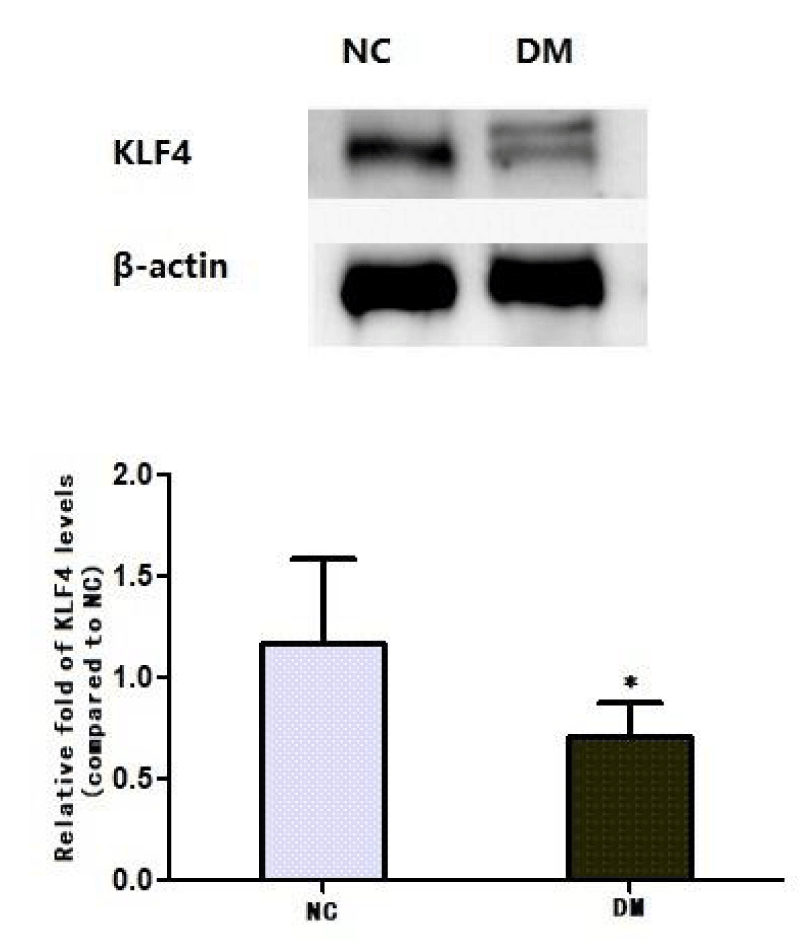
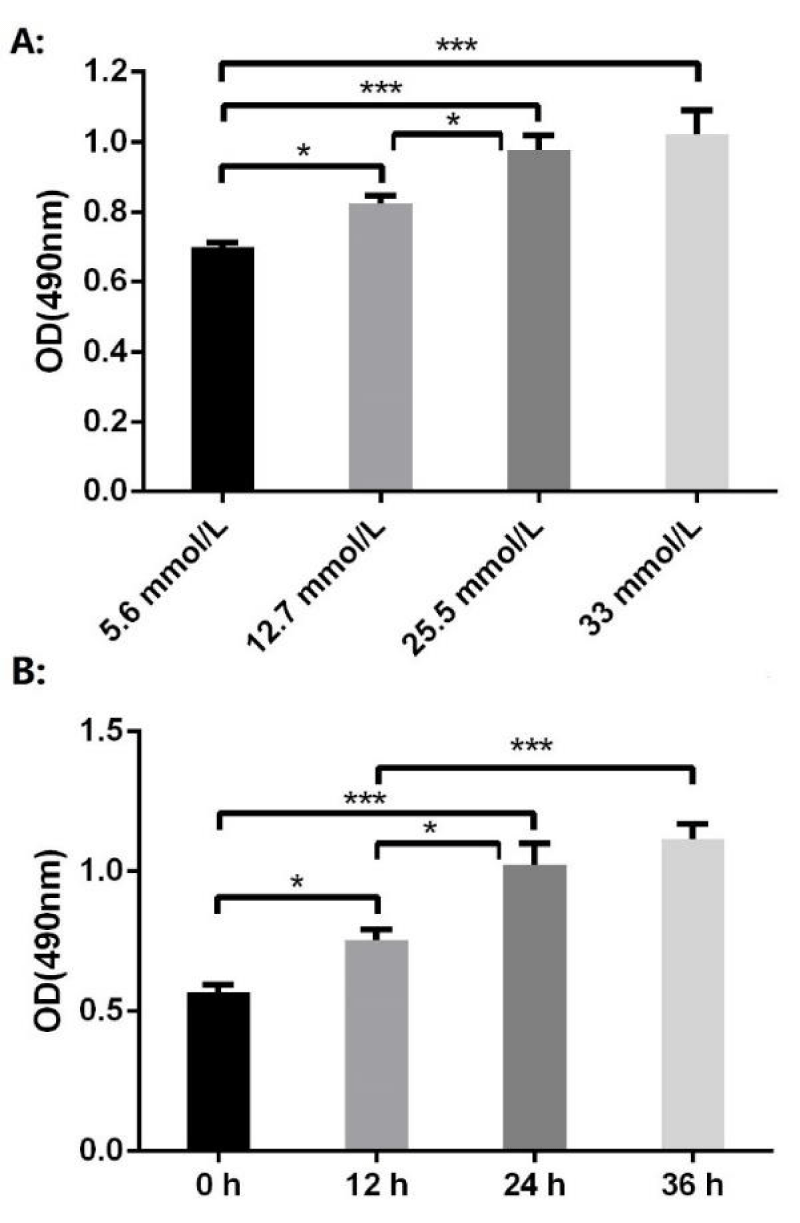
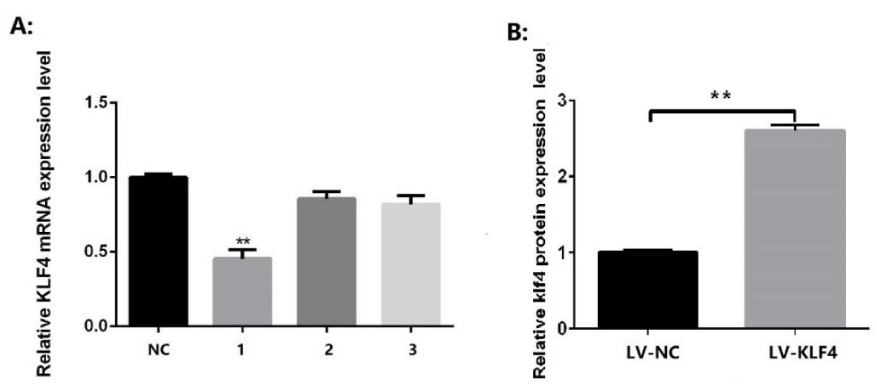
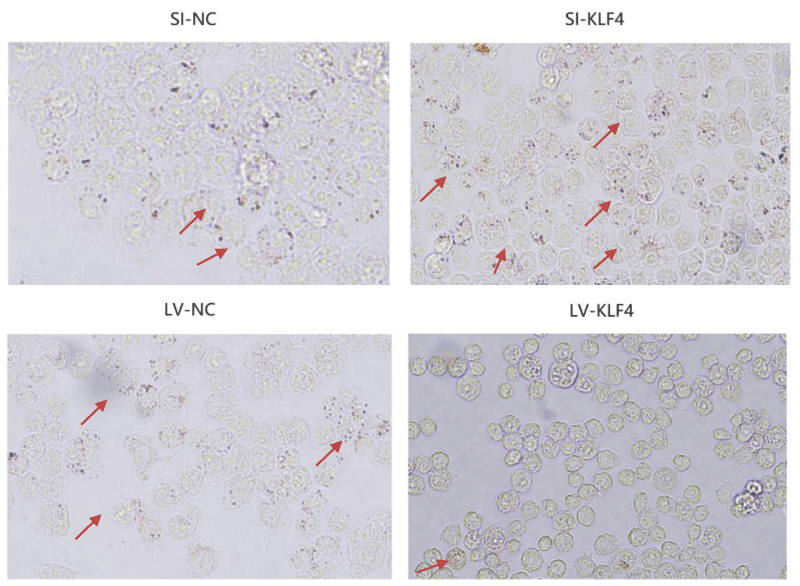
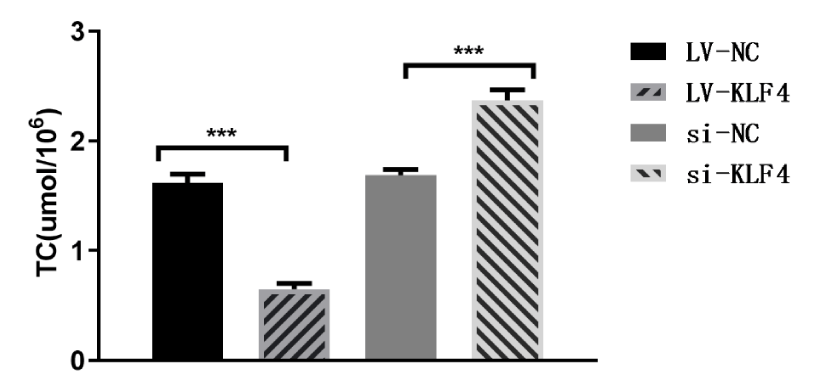
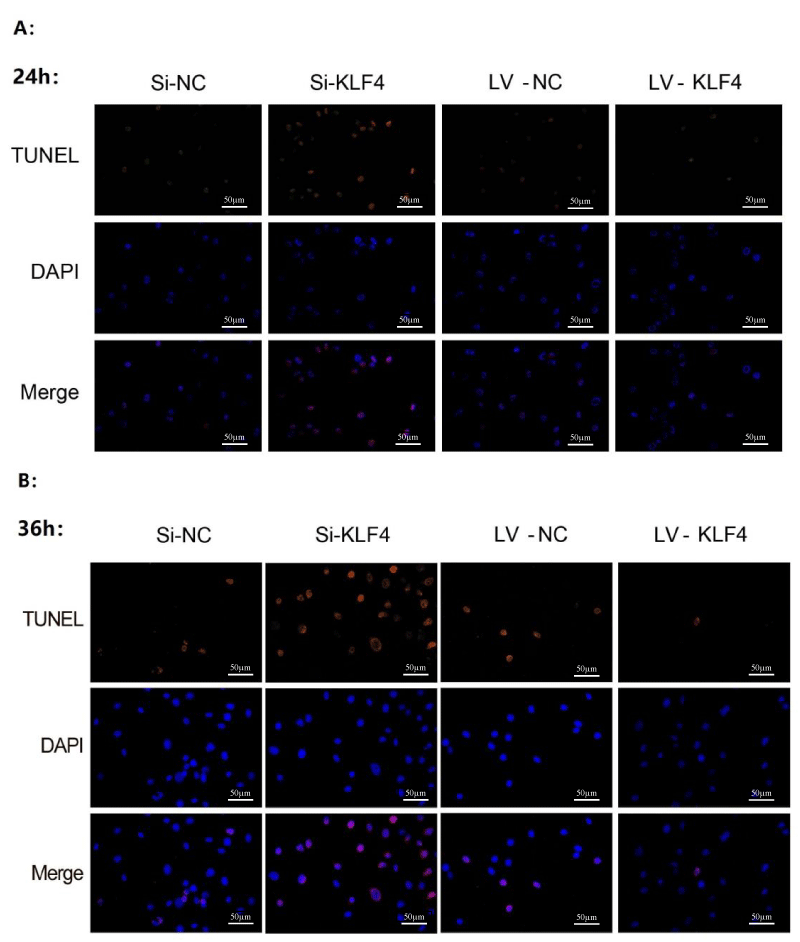
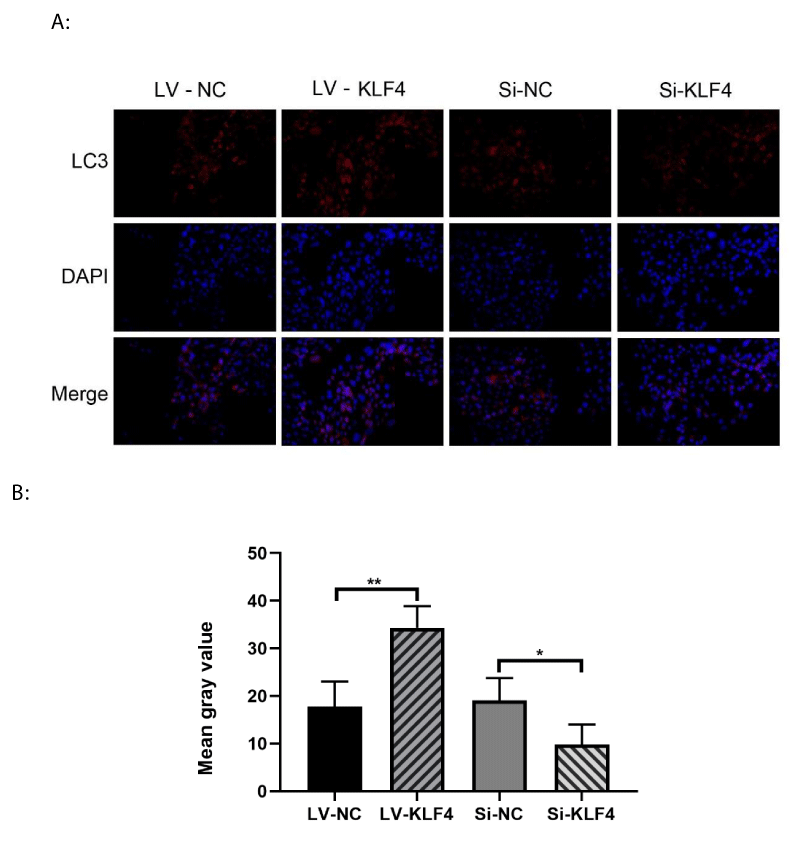
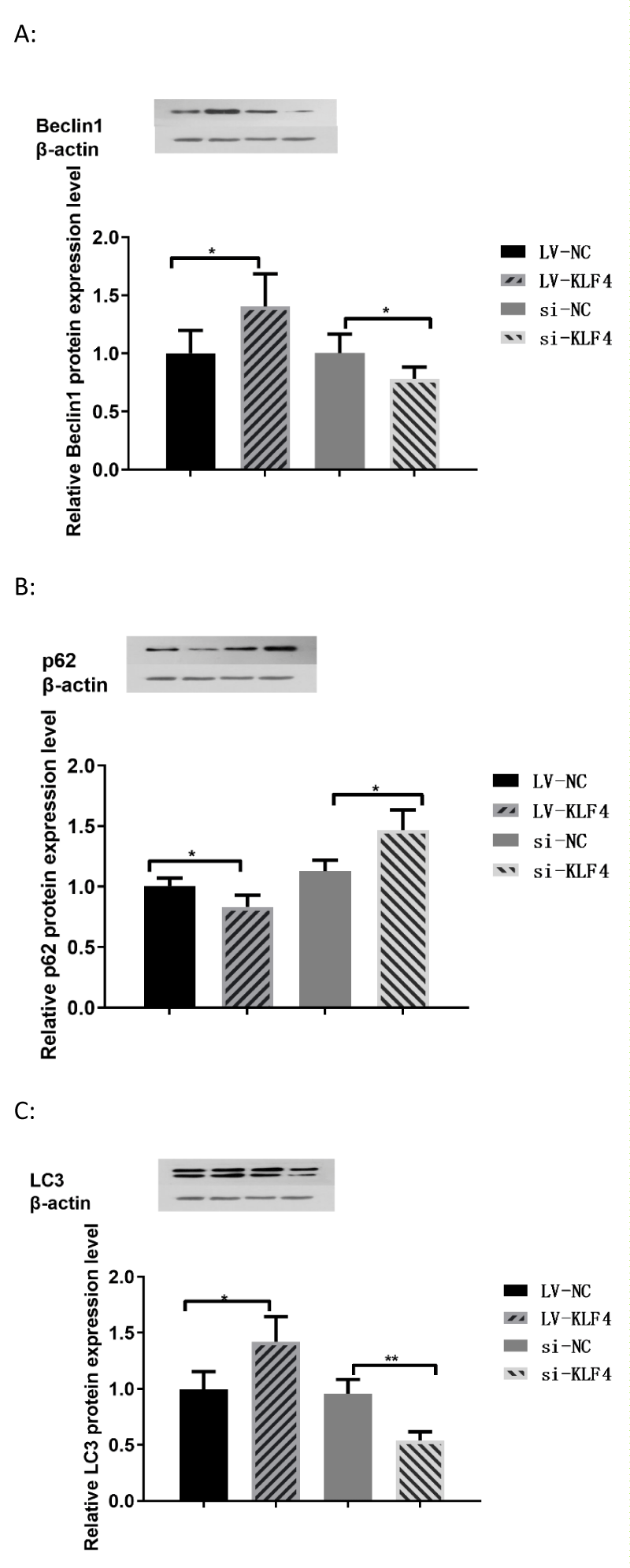
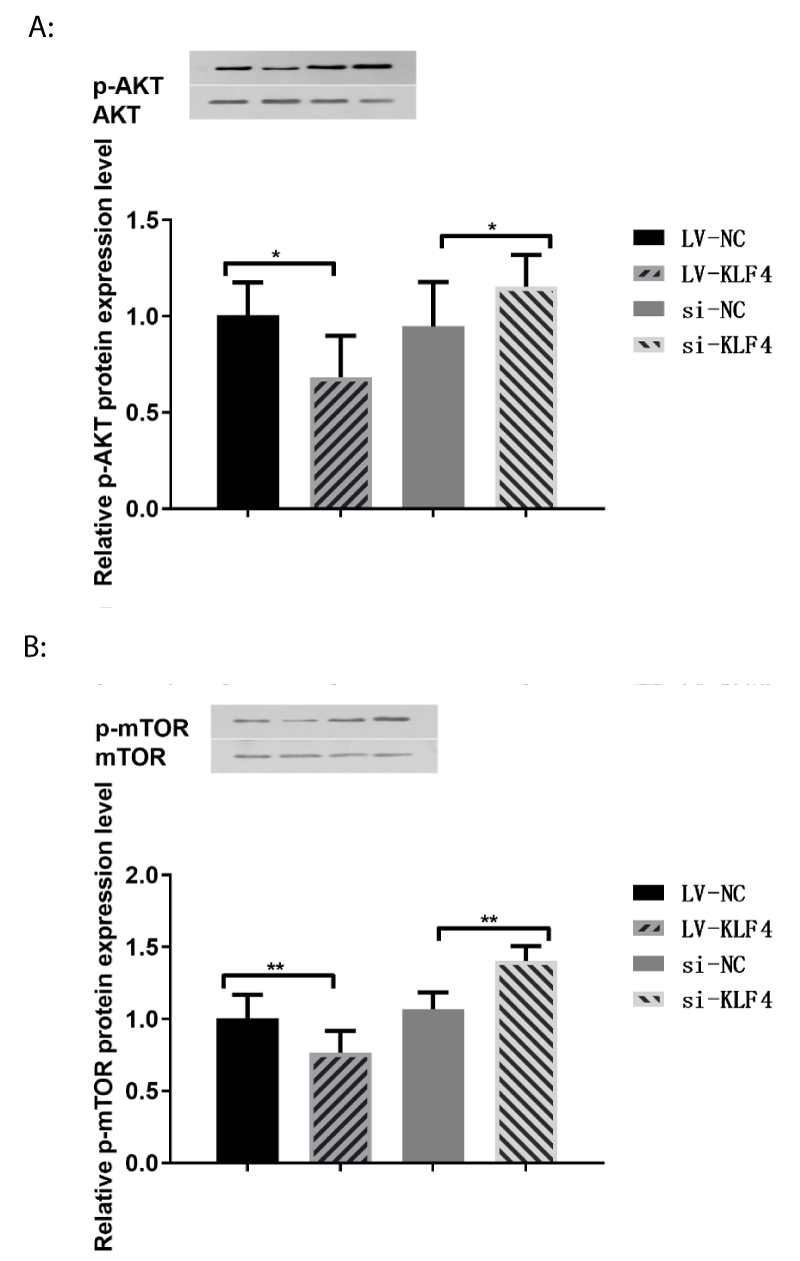


 Save to Mendeley
Save to Mendeley
